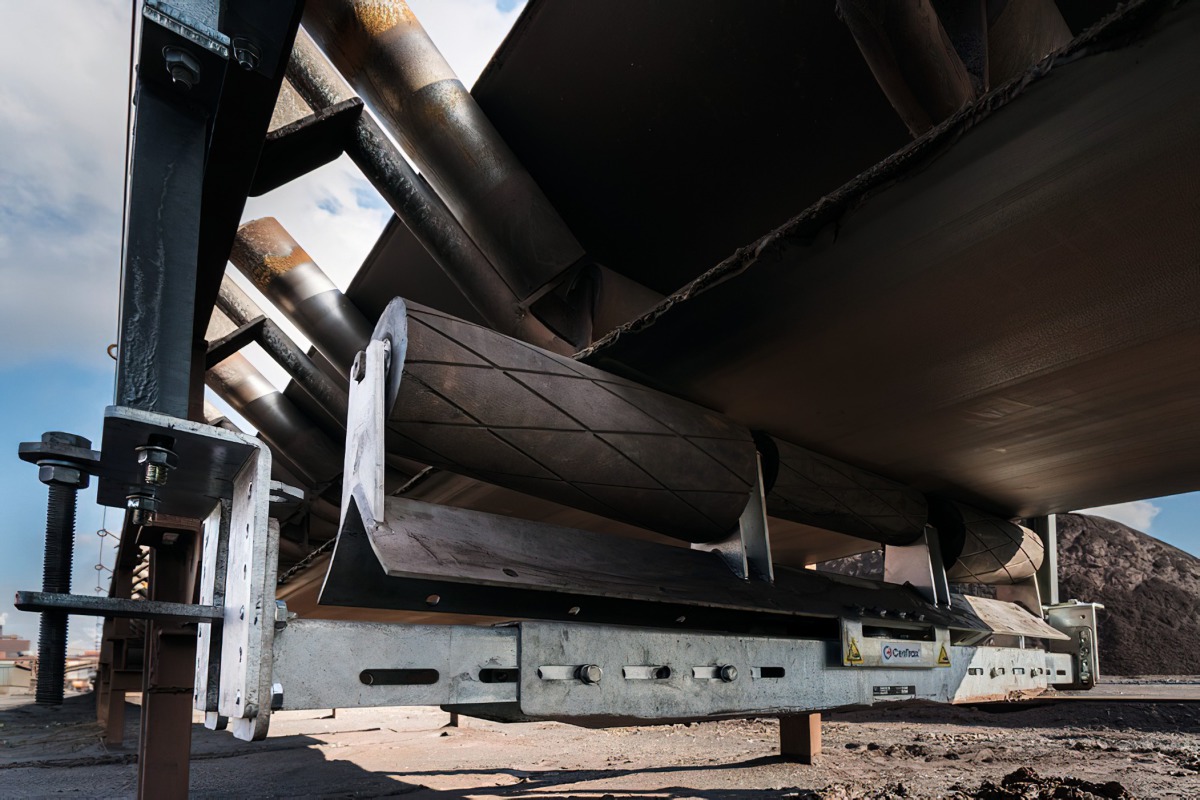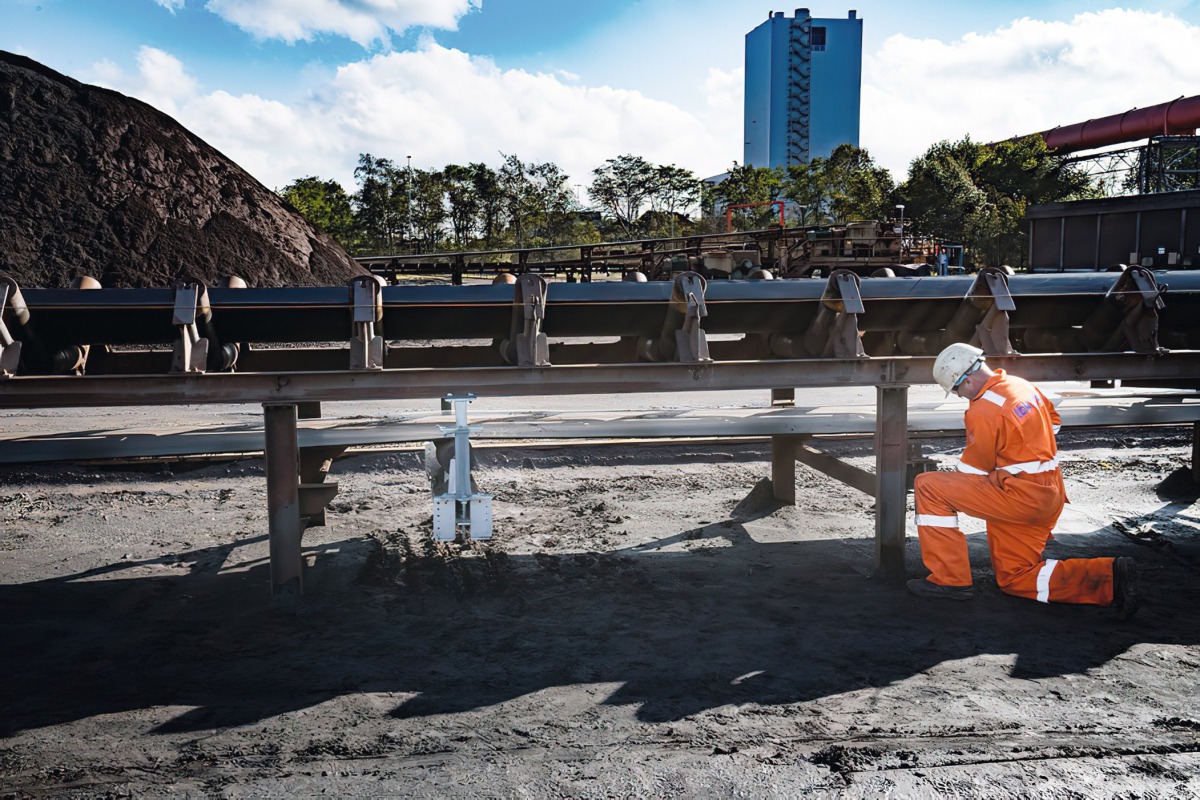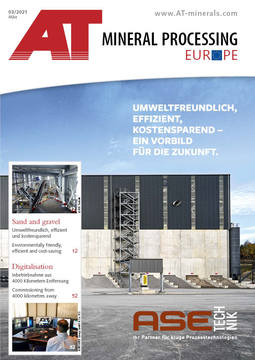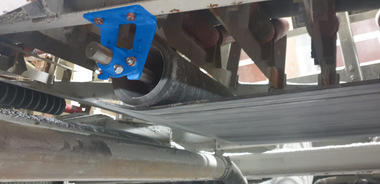CenTrax keeps conveyor belts on the right track
 1 CenTrax centralizes the conveyor belt on the rollers
1 CenTrax centralizes the conveyor belt on the rollers
© CenTrax
A trouble-free conveyor belt is crucial for a company such as ArcelorMittal. The Raw Materials, Port, Transport and Recycling divisions of the world’s largest steel producer processes almost 10 million tonnes of raw materials annually. This particular logistics branch deals with unloading seagoing vessels and the careful separation and storage of delivered raw materials to so-called raw material storage areas. Harbour cranes and stacker- and reclaimer installations are used for this specialised work. In addition, the department has an impressive network of conveyor belts for transporting raw materials such as coal, coke, sinter, pellets, lime and slag.
 2 The CenTrax belt tracking system can be adapted to almost any conveyor belt configuration
2 The CenTrax belt tracking system can be adapted to almost any conveyor belt configuration
© CenTrax
If materials of different compositions are transported on a conveyor belt, then this may cause mistracking due to, among other things, a varying parabolic trajectory. Using the CenTrax Belt Tracker, a chain reaction can be prevented by systematically correcting this type of mistracking. The CenTrax belt tracking system can be adapted to almost any conveyor belt configuration and, because of its robust, flexible construction, is extremely suitable for harsh operating conditions, such as those found at ArcelorMittal.
According to Vertriest, the Reliability Engineer responsible for Raw Materials Harbor, Transport & Recycling, there were several reasons for the mistracking problems, which have since been corrected. “The most common causes are problems with rollers, decentralized loading onto the conveyor belt and worn-out pulleys. Alignment problems in the belt frame, contamination due to problems with scrapers, overloading and poor sealing of the discharge point can also result in mistracking.” Issues which, in his opinion, can result in spills, damage to the conveyor belt, belt frame and may even be a fire hazard. There is a real chance of this happening if the conveyor belt hits the guards or casings.
Alex Budding, account manager at TBK Group, adds: “During our visit to the steelworks in Ghent, the lines that were affected by mistracking appeared to be fitted with tracker rollers, however, these were having no effect at all. After thoroughly analysing the problem, we explained what we believed to be the best way to address the problem. ArcelorMittal gave us the opportunity to implement our proposal on a ’no fix, no charge’ basis. One of the things we did was to fit a Centrax Belt Tracker at approximately seven metres in front of the return pulley. Due to the special mounting brackets and the width and height adjustable frame of the CenTrax, the installation was completed quickly.”
Immediately after starting up the conveyor line C-45, the CenTrax centralized the conveyor belt on the rollers. Because the conveyor was now running centrally over the return pulley, it was positioned in the middle below the chute point. “Consequently, the conveyor was centrally loaded, immediately solving the mistracking issue in the upper part. One single CenTrax belt tracking system ensured that the conveyor belt remained positioned centrally over its entire length,” Budding explains.
“TBK has an excellent no-nonsense approach, with targeted initiatives to test their products on site. Together, we have found a number of solutions for areas where our conveyor belts regularly mistracked. We are currently testing the Spill-Ex 2.0® sealing system, which has been newly developed by TBK. This has been fitted to a chute point where we were unable to control the spill. This product also works excellently,” says Vertriest.
“There have been areas where the CenTrax tracking system initially did not have sufficient impact to improve conveyor tracking. In this situation, TBK had some excellent ideas on what the cause could be.” In addition, the CenTrax Belt Tracker came out best in a comparison carried out by ArcelorMittal. ArcelorMittal compared six similar tracking systems, taking into account both their effectiveness and lifespan.






